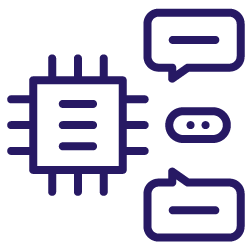Although it has been around for years, it seems as though AI, and particularly generative AI – tools like ChatGPT and Gemini – is currently in its heyday. Wherever you turn, it has quietly embedded itself in a wide range of technologies, industries and applications.
As generative AI and the use of LLMs become more popular, it’s important to understand the different phases that this technology goes through in order to mimic human language generation. Lazarina Stoy lays out the five phases of NLP in the infographic below.

5 phases of NLP infographic
Feel free to share on your website
Transcription
Phase 1: Lexical or morphological analysis
This is the phase of word structure analysis, which is referred to as lexical or morphological analysis.
How to use it for SEO?
- Understanding how often target keywords are used in their core form.
- Applying the analysis to your collected database of keywords during keyword research.
Useful tools for phase 1:
Python libraries spacy, Polyglot and pyEnchant
Phase 2: Syntax analysis (parsing)
The process of checking grammar, word arrangement, and overall – the identification of relationships between words and whether those make sense.
How to use it for SEO?
- Programmatically-generated content from sentence patterns: Checking whether the produced content makes sense, especially when using a content pattern approach.
- Detecting and correcting grammar issues: Regularly scanning your website’s content for syntactic errors and inconsistencies can help maintain high-quality content standards.
Useful tools for phase 2:
- Google’s Natural Language API’s Syntax Analysis module
- Parsing in Python
Phase 3: Semantic analysis
The third stage in NLP is when an analysis is performed to understand the meaning in a statement.
How to use it for SEO?
- Understanding of topics and subtopics
- Classifying text (e.g. entire web pages) into content categories
- Keyword clustering
- Entity analysis, sentiment analysis
Useful tools for phase 3:
Google’s Natural Language API, has a modules for:
- Entity identification
- Entity sentiment analysis
- Sentiment analysis
- Text classification
Phase 4: Discourse integration
Discourse integration simply means contextualisation. It involves analysis and identification of the larger context of natural language texts.
How to use it for SEO?
- Programmatically-generated content logic and coherence evaluation.
- Content moderation and analysis of online forum discourse
Useful tools for phase 4:
- Google Natural Language API Discourse analysis module
- Perspective API
Phase 5: Pragmatic analysis
This final phase extrapolates and incorporates the learnings from all other, preceding phases of NLP
How to use it for SEO?
- Automated content generation
- Generative AI applications for text-to-text transformations
- Text summaries
- FAQ automation
- Product description automation
Useful tools for phase 5:
- Generative AI ML modelsJust be wary of limitations including text inaccuracy or inappropriate content, and always make sure to have an editing process in place for text accuracy and fact-checking when implementing generative AI.

